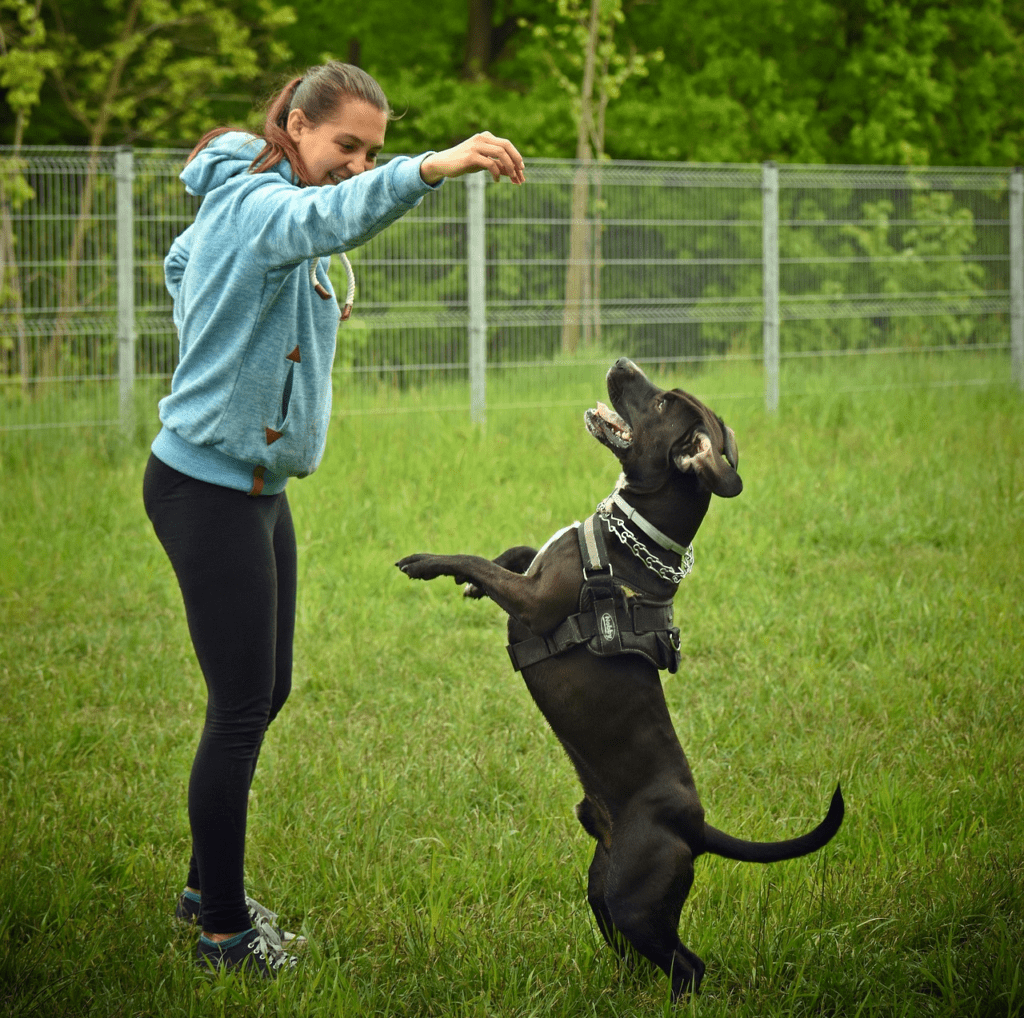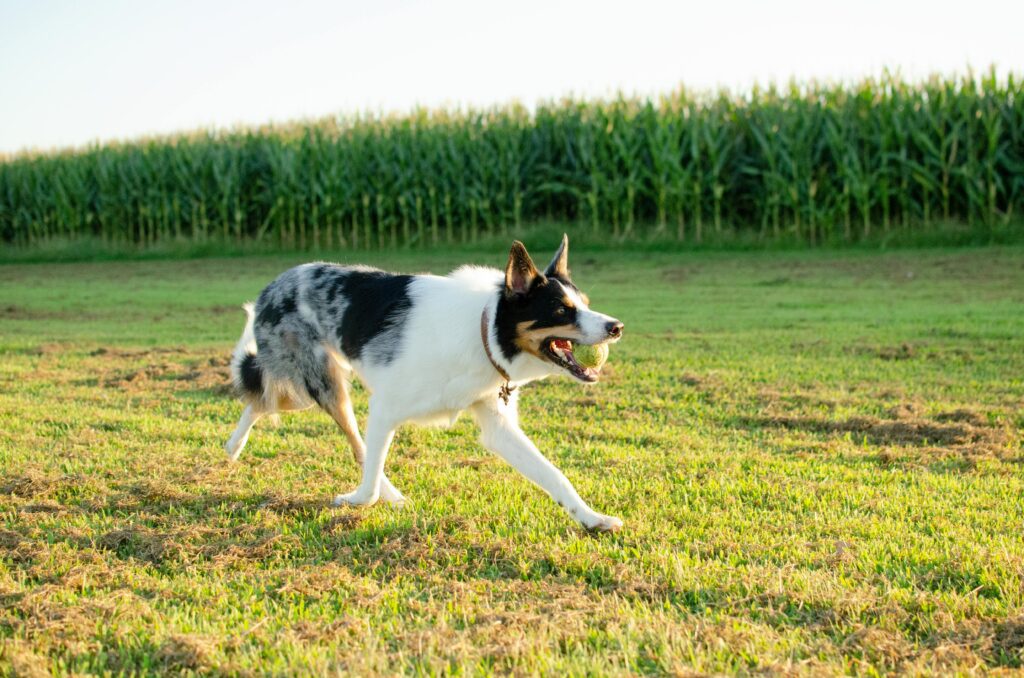I had a customer saying that his farm dog wouldn’t stay on the farm. Every morning, he lets the dog out, but after a while, he disappears. He tried a lot of ways from building strong fences to giving treats, but nothing worked. The dog always found a way to escape and wandered far from the farm.
If you have the same problem, don’t worry. In this article, we’ll talk all about how to keep a farm dog from roaming and exactly those methods I suggested to him that finally worked. So, keep reading!
In This Post
ToggleWhy Do Farm Dogs Roam?
Farm dogs are important. They help protect animals, watch over the farm, and keep you company. But sometimes, they wander too far and can get lost or hurt. They roam for many reasons, and understanding why they roam is the first step to stopping it.
1). Breed Traits
One of the biggest reasons for farm dogs roaming is their instincts and breed traits. Most of the farm dogs include Border Collies, Australian Shepherds, Great Pyrenees, Anatolian Shepherds, and Maremmas. They were bred to guard livestock, chase predators, and herd animals over large areas. If they don’t have a job to do, they may roam out of habit because it’s in their nature.
2). Boredom
Farm dogs are mostly active. If they don’t have enough playtime, work, or stimulation, they will find ways to entertain themselves. In the farm the best way to do this is roaming which can be an exciting adventure.
3) Food Searching
Its dog’s nature to search for food is like dogs. If a dog isn’t getting enough food or smells something tasty outside the farm—like in a neighbor’s bin or a field with livestock feed—it may wander off to look for it.
4) Mating Instincts
Unneutered male dogs have a strong drive to mate, which is primarily influenced by their hormones, especially testosterone. Suppose they detect the scent of a female in heat (which can travel long distances). In that case, they can travel long distances searching for her, completely ignoring any commands and even physical barriers like fences.
Other Possible Reasons
- If the boundaries are unclear, dogs might not know where the farm ends.
- Dogs have a strong prey drive. They love to chase small animals like rabbits or squirrels, which can lead them far from the farm.
- Dogs are social animals. If they don’t get enough time with their owners, other dogs, or animals on the farm, they might roam to find company elsewhere.
- Loud noises, like thunderstorms or tractors, can scare them, making them run away.
Best 5 Ways to keep a farm dog from roaming
Keeping your farm dog from roaming isn’t just one solution—it’s about combining the right methods, as outlined below.
1. Build a Strong Fence

A good fence is the most reliable way to stop a dog from roaming. Your dog can easily wander off if your farm isn’t fully fenced. Consider the following during fencing.
- Your fence must be at least 4 to 6 feet tall so your dog can’t jump over it. Some dogs, especially of large breeds, can easily clear shorter fences.
- Bury the bottom of the fence at least a foot underground or use chicken wire at the base to stop digging.
- Dogs can squeeze through gaps or push loose parts. Sometimes take a look at the fence for any holes or weak spots.
👉 If fencing the entire farm isn’t possible, fence in a large area where your dog spends most of his time.
2. Train Your Dog to Stay on the Farm

Even if you have a strong fence, training is still important because fences are a physical barrier while training is a mental barrier. When both are combined, your dog is much less likely to roam. Following are the things you can do in training
- Walk your dog on a leash around the edge of your property every day. Let him sniff and familiarize himself with the area.
- When your dog tries to leave the boundary or is already outside, say “[Name] come back!” and reward him if he listens. If he doesn’t listen go to him, put him on a leash, and gently guide him back inside. Repeat this training until he learns to obey the command. If he runs off but comes back, never yell or punish him—otherwise, he may not listen next time. By this, you can strengthen his “come” command, making it easier to control him if he ever runs off.
- If your fence has weak spots, your farm has multiple sections, or you are using an invisible fence where dogs can’t see the boundary, you can place flags, rocks, or small fences at the boundary and train your dog to stop at those points. For training, walk him along the boundary on a leash, stop at the markers, and say a clear command like “Stop” or “Stay.” Reward him with treats like peanut butter, cow tail, yak chews, etc or praise when he listens. Repeat until he understands.
3. Make Sure Your Dog Gets Enough Exercise
Farm dogs are often too energetic. If there is not enough space on the farm and they don’t get enough physical and mental exercise, they may become bored and wander to find something exciting. To keep your dog engaged and calm, you can…
- Take him for daily walks or play sessions.
- Give him puzzle toys, treat-dispensing toys, or chew toys to keep his brain busy.
- Play interactive games like fetch, tug-of-war, or hide-and-seek. This will not only burn excess energy but also strengthen your bond.
- Assigning him a job on the farm. He can help with herding animals, guarding the property, or retrieving small items. Having a task keeps him active, mentally engaged, and less likely to get bored or wander off.
4. Use a GPS Tracker or Smart Collar
Even with all the above ways, some dogs may still wander off, especially on large farms. Therefore, a GPS tracker or smart collar is recommended because it allows you to monitor your dog’s real-time location.
These devices work by using GPS satellites to determine your dog’s position and then transmit that data to your phone or computer through cellular networks, Wi-Fi, or Bluetooth. Most GPS trackers have a mobile app or website where you can see your dog’s live location on a map.
Some smart collars also send alerts when your dog moves beyond a set boundary. So, you can bring him back before he goes too far.
To ensure the tracker is practical, reliable, and effective consider the following properties.
- Lightweight, waterproof, and easy to attach.
- Real-time location tracking via a mobile app.
- Geofencing alerts and long battery life.
5. Spay or Neuter Your Dog
Dogs often run away because of hormones. When a female dog is in heat, her body releases strong scents called pheromones which can be active over distances of several hundred feet and in some cases even miles away1. If a male dogs smell this scent, he may try to escape and roam to find the female. Female dogs in heat may also try to leave to find a mate. But don’t worry a medical process called spaying or neutering can stop this by lowering hormone levels.
Spaying
It is the surgery for female dogs in which ovaries and usually the uterus are removed which stops them from going into heat and getting pregnant. In this way, she can’t release pheromones and won’t attract males or feel the urge to leave.
Neutering
It is the surgery for male dogs in which the vet removes the testicles, so the dog can’t make puppies and has lower levels of hormones that cause roaming in search of a mate. This can also reduce aggressive behavior.
Most vets recommend spaying or neutering small or toy-breed dogs at 6 to 9 months. However, larger or giant breeds may need to wait until 12 to 18 months to ensure proper growth and development.2
These ages are general guidelines. It is best to consult a vet to determine the optimal age and timing according to your dog’s specific breed.
Also, avoid spaying a female dog during her heat cycle, as that may exacerbate excessive bleeding.
Final Thoughts

Stopping a farm dog from roaming needs a mix of training, fencing, and keeping him happy. A strong fence helps, but training is just as important. Teach your dog to stay inside the boundary and come when called. Give him enough exercise and attention so he doesn’t get bored.
Neutering or spaying also lowers the urge to run away, especially for male dogs. Extra tools like a GPS tracker or a wireless fence can help too.
Most importantly, make sure your dog feels like part of the farm. When he is happy, well-fed, and loved, he won’t leave!
Sources
- Types of pheromones used in lures — Museumpests ↩︎
- Best Age to Neuter or Spay Your Dog? — American Kennel Club ↩︎
Featured Image: Unsplash (Michael Barnes)
